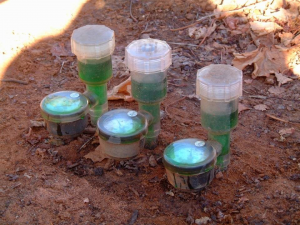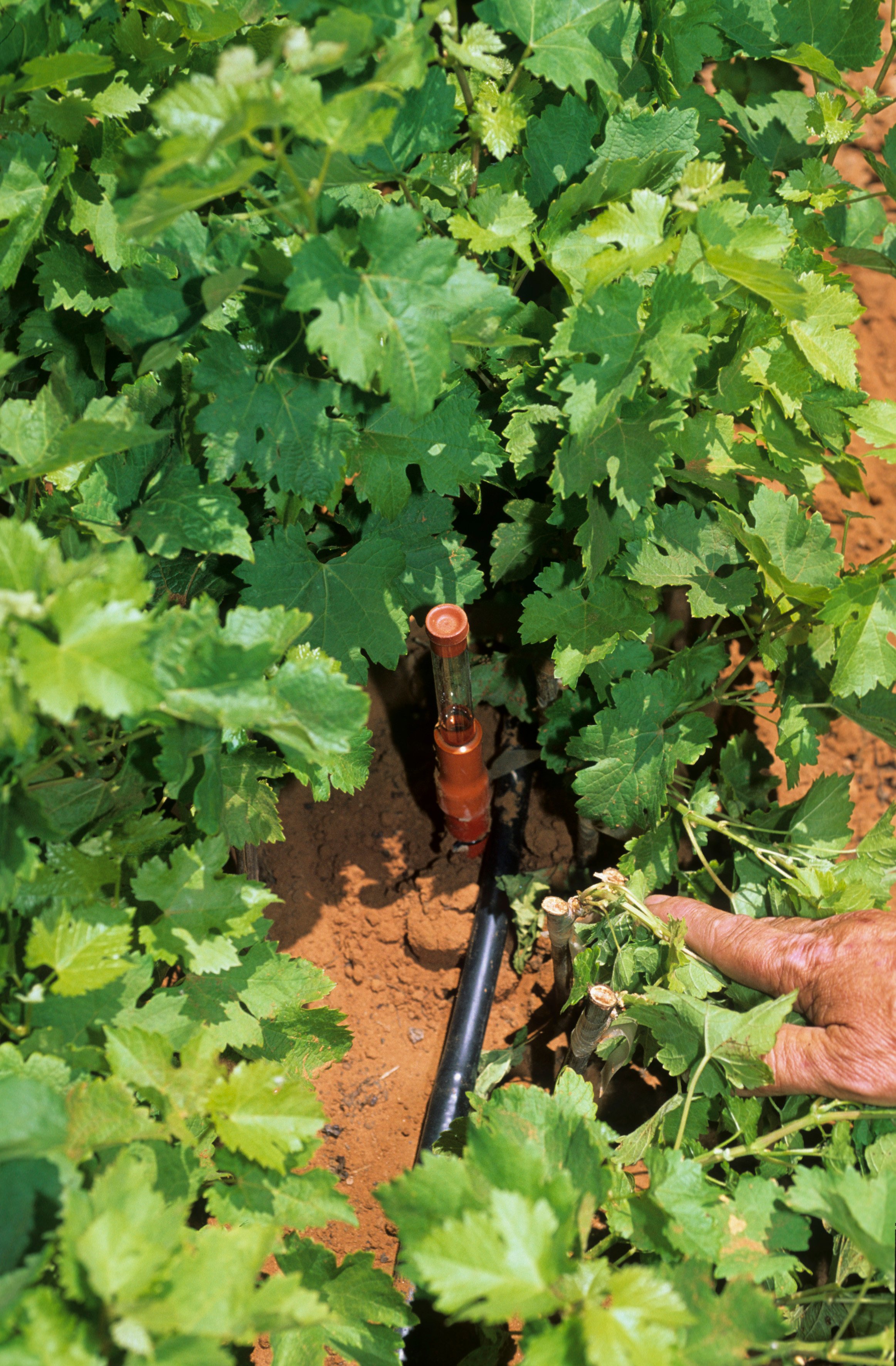Tension measuring devices provide information about water availability in the soil. Soil tension can be used by irrigators to better plan when to irrigate in order to optimise plant performance and water productivity.
Scheduling Irrigation with Tension
Tension measures how tightly the water is held in the soil. It is generally measured in kilopascals (kPa) and recorded as values of minus or negative kPa, however the minus sign is not always present.
Water is held in the soil by the attractive forces between water molecules and the soil. When soil water is extracted by plants, the most readily available water is removed first. As water extraction continues, tightly held moisture remains and the plant requires increasingly more energy to extract the remaining water. This results in a more negative tension. Optimum plant growth occurs when soil moisture is maintained within a pre-set range of tension.
Measuring soil tension provides irrigation managers with an estimate of the most appropriate time to irrigate.The most common soil moisture monitoring tools which measure tension are the tensiometer and the gypsum block.
What are Tensionmeters?
Standard tensiometers generally consist of an airtight, water filled tube with a porous ceramic tip at the bottom and a manually read vacuum gauge at the top. The tensiometer is partly buried in the soil to a suitable depth and, when used properly, can help determine when water should be applied to maintain optimum crop growth.

Figure 1. A standard set of tensiometers installed at 30, 60 and 90 cm depth (Image: Jeremy Giddings)
How do they work?
Water moves freely in and out of the ceramic tip when in close contact with the soil. As the soil dries out, water is drawn out through the tip, creating a partial vacuum inside the tensiometer which is read on the vacuum gauge. When the soil is wetted by sufficient irrigation or rainfall, water flows back into the tensiometer.
What are Gypsum Blocks?
Gypsum blocks are devices— comprising or containing a disc of gypsum—which measure soil water tension (also in kPa) using electrical resistance. There are two types of gypsum block:
- Malvic Gypsum Block – consists of two electrodes embedded in a cylindrical block of gypsum. They measure soil water tension in the range from 30 to 1,500 kPa.
- Granular Matrix Sensor (GMS) or Watermark – consist of two electrodes which instead are embedded in a uniform sand fill, or matrix with a small gypsum block embedded within. They measure soil moisture tension from 0 to 300 kPa.
Figure 2. Traditional malvic gypsum block (left) and a Watermark granular matrix sensor (right) (Image: Dominic Skinner, MEA).
How do they work?
Water moves in and out of the pores in the blocks in equilibrium with the soil. As the soil dries out water is extracted from the gypsum block and the resistance reading between the electrodes increases. When the soil is wetted, water is drawn back into the block and the resistance decreases. The resistance measurement (ohms) is converted to units of kilopascals (kPa).
Placement of Devices
It is essential to understand the location of the root system to accurately position the sensors. Rooting depth will vary depending on the soil, crop type and management practices. Do not assume standard installation depths are appropriate for every situation.
At least one sensor should be located in the active rootzone of the crop. One or two additional sensors should be placed throughout the soil profile, including one at the bottom of the rootzone to monitor subsoil moisture and drainage. Ideally each crop and soil type combination should have a set of sensors.
Correct installation and troubleshooting is essential for optimal performance of tension based monitoring please view the fact sheet below for more information.
More information
Using tension-based soil moisture monitoring tools to schedule irrigation factsheets.pdf
Using tension-based soil moisture monitoring tools to schedule irrigation factsheets.doc
An overview of soil moisture monitoring
Plant based sensors for irrigation scheduling


